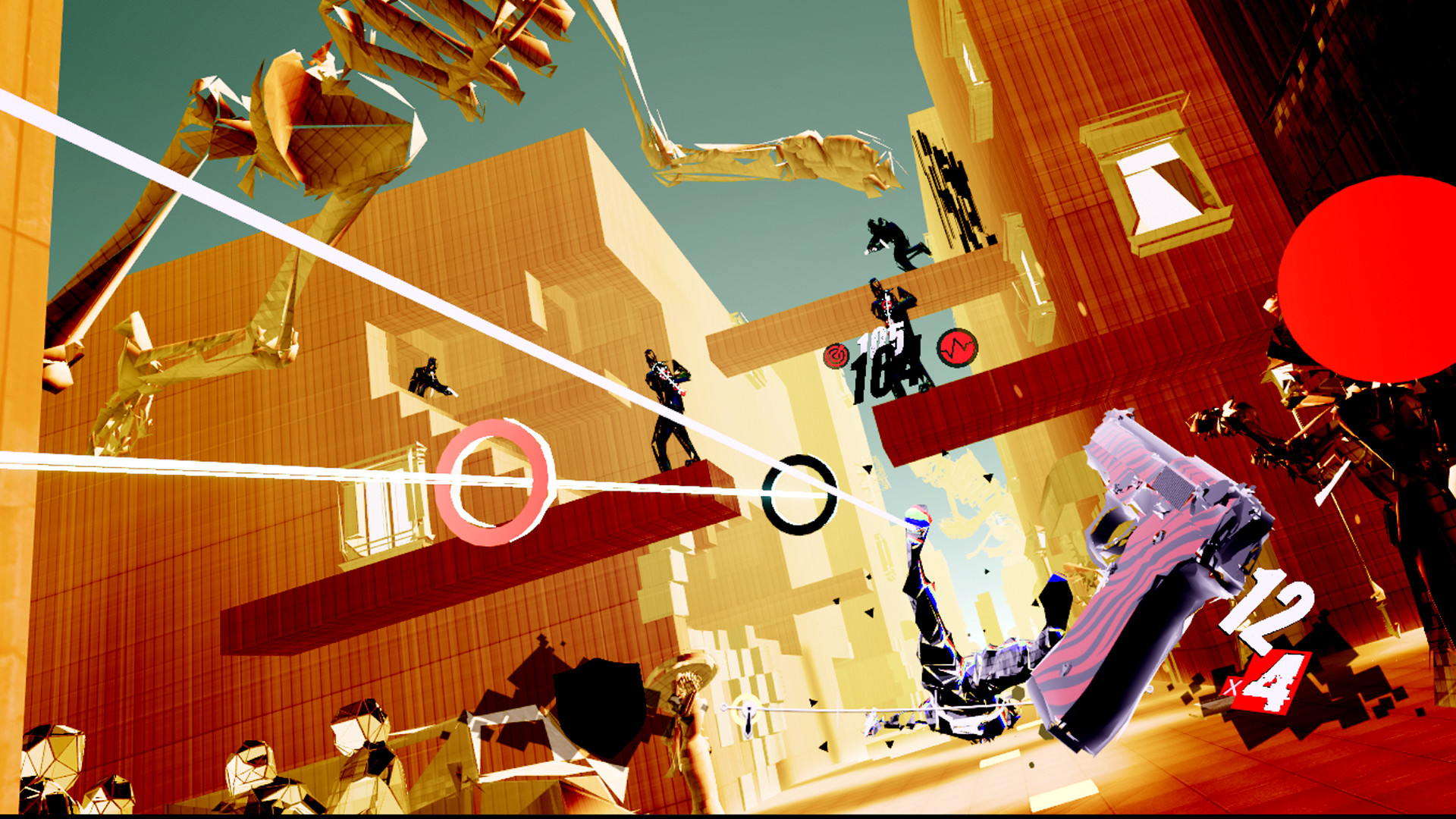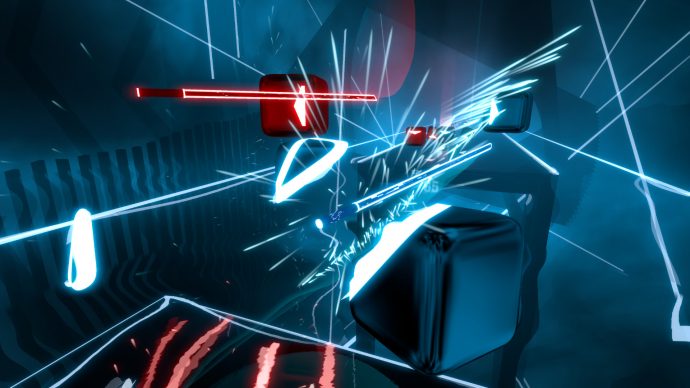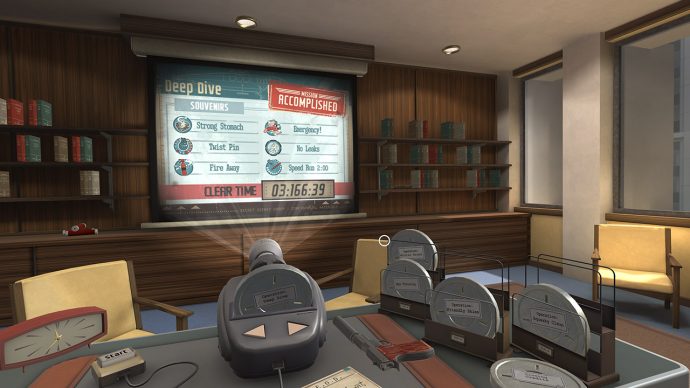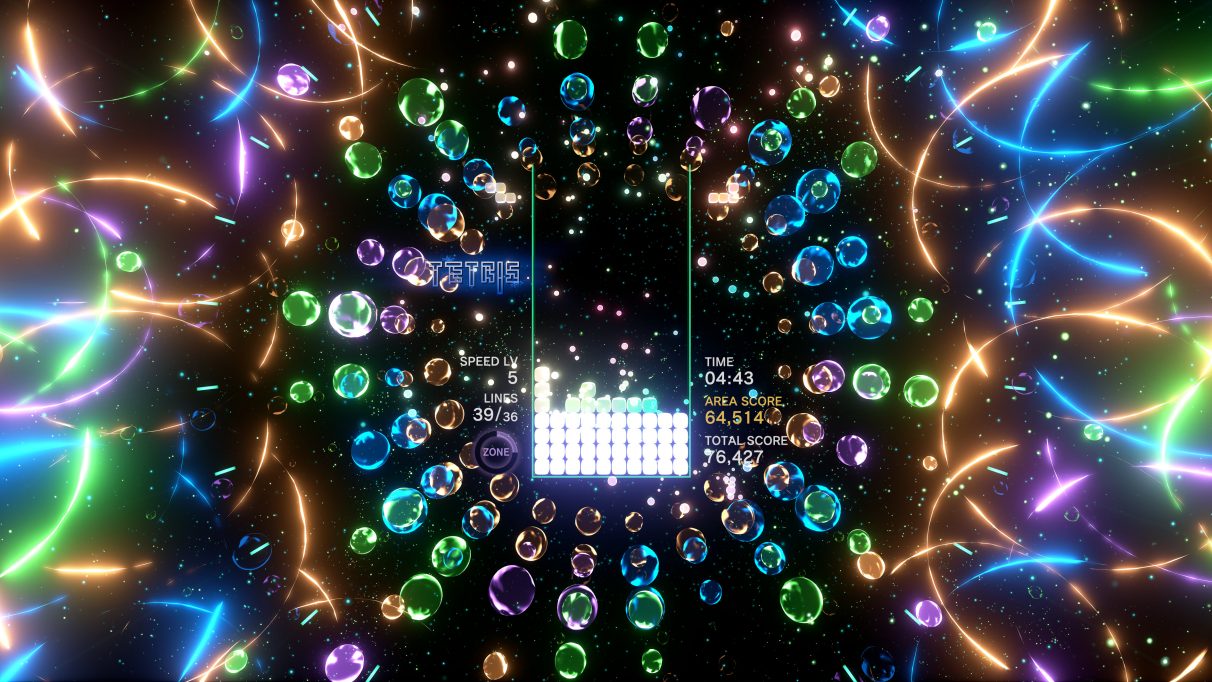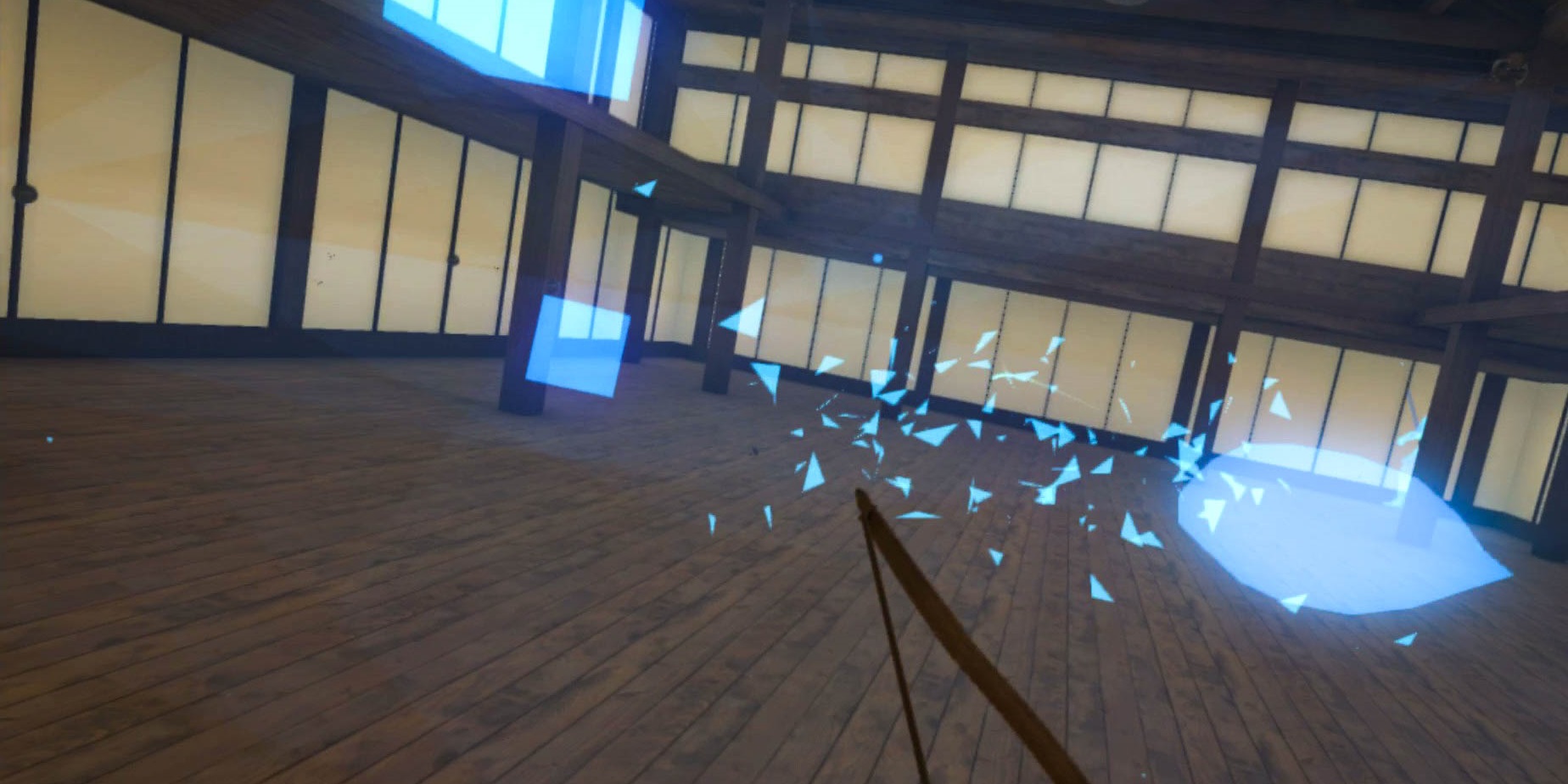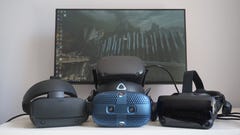The 20 best VR games for PC
VR is here to stay
Ever since Half-Life: Alyx came out earlier this year, virtual reality has been going from strength to strength, so we've put together a list of the best VR games you can play on PC right now. It's by no means a complete list, as there are now more great VR games than you'll ever have time to play, but if you've just bought yourself a virtual reality headset such as the Oculus Rift, HTC Vive Cosmos or Valve Index, then these are the VR games you should play first.
We've concentrated on VR games that run on multiple platforms when compiling this list, though you will find a handful of Oculus exclusives among our top picks. We've also concentrating on looking at official releases rather than user-made hacks, as well as experiences that have been designed at least in part with VR in mind. That means no games that are mostly about staring or watching than actually playing. Don't forget, you can also play all the VR games below on an Oculus Quest as well, thanks to Oculus Link. Just follow our How to play Half-Life: Alyx on Oculus Quest guide to get started.
Best VR games
Virtual reality is an increasingly mature medium, which means the best VR games cover enough genres to appeal to most different kinds of players. Our picks of the very best are below, but if you think there's a great VR game we've missed then tell us why you love what you love in the comments below. You can also find out more about what we think of the best VR headsets for PC, or if you've got lost and don't want a VR game at all, check out our non-VR picks of the best PC games you can play right now.
- Half-Life: Alyx |
- Pistol Whip |
- Beat Saber |
- No Man's Sky |
- I Expect You To Die |
- Racket: Nx |
- Tetris Effect |
- The Climb |
- Minecraft |
- Job Simulator |
- Serious Sam VR: The Last Hope |
- American Truck Simulator |
- Fantastic Contraption |
- Holopoint |
- ADR1FT |
- House Of The Dying Sun |
- Lone Echo |
- Onward |
- Rez Infinite |
- Superhot VR
Half-Life: Alyx
Half-Life: Alyx is Valve's first Half-Life game in 13 years, and their first FPS in eight, but they've lost none of the craft that first made them famous. HL:A takes everything that made previous games in the series great and makes them work in VR, from headcrabs pouncing at your face to Antlions bursting when you shoot their glowing sacs.
There's a lot that's new here, too. Set five years before the events of Half-Life 2, you take control of former sidekick Alyx. She speaks - the series' first talking protagonist - and the dialogue is funny throughout. Alyx also has gravity gloves rather than a gravity gun, to help you in pawing your way through the newly dense environments. You have to manually load bullets into your weapons, all of which can now be upgraded, and combat is newly tense as a result. Particularly during the frequent horror sections, which are among the scariest experiences you can have in VR and pitch perfect in avoiding frustration.
If you're looking for a large scale FPS game in VR, Half-Life: Alyx is the game for you. Valve can operate at a scale and level of polish that other studios simply can't afford to match. Hopefully it won't be another 13 years before they try again.
Pistol Whip
Imagine Guitar Hero - or Beat Saber, elsewhere on this list - but you're shooting at men in time to the music instead of tapping or slicing blocks. That's Pistol Whip, and it's glorious.
Each level has you sliding down a straight tunnel as silhouetted figures appear and take aim. You have to duck and dodge their bullets, and shoot or punch them first. Some enemies wear armour and require multiple hits to go down, but otherwise there's not much more to it than that. It's easy enough, with generous aim assist, that you can breeze through most of its levels on your first couple of tries.
The real magic happens when you start trying to increase your score by timing your shots and reloads in time to the music, turning combat into a dance. It's propulsive like Hotline Miami. It's aesthetically complete like Superhot - the movie posters representing each stage are a particular highlight. And it's a surprisingly good way to workout and de-stress.
Beat Saber
Rhythm games turn out to be well suited to VR, and Beat Saber is their perfect expression. The game's basic structure is the same as any you might have played with a plastic guitar, as blocks swoosh towards you in columns and you must pop them in time with the music. The difference is that you don't hit them with button presses, but by slicing them with one of the glowing sabers you wield in each hand. Red blocks must be hit with the red saber, blue with the blue, and each block must be slashed in the direction indicated on their front.
The slow mastery of upbeat songs is more satisfying than ever when it involves turning you into the midway point between a dancer and a sword fighter. This alone would be enough to recommend the game, but the package around it is exemplary. Every song has easy, medium, hard and expert modes; there's a practice mode that lets you slow down songs so you can practice them; and there's a growing catalogue of user-created custom songs to import and official song packs to buy. Beat Saber operates smoothly within every limitation of VR, and makes use of its every benefit.
No Man's Sky
The galaxy-exploring survival-crafting-creative game has been gradually improving via free updates for a few years, and a recent update brought VR support with it. It's instantly one of the best full game experiences available in virtual reality.
That's in part because of the nature of the game itself. No Man's Sky is about flying between colourful planets, exploring their surfaces, and gawping at strange flora and fauna. All of these experiences are enhanced when done in VR. Hello Games have also put lots of effort into making sure the game's controls work in VR - swinging your arms to move is a good fit, and grabbing and hoisting on parts of your spacecraft is a delight.
It's also atmospheric enough that it's worth trying out even if you have no desire to build a spacebase or fight for survival. Simply land on a space station, sit at the end of the runway, and watch the NPC spaceships come and go.
I Expect You To Die
Virtual reality has offered a boon to adventure-style puzzle games, as it turns out tinkering with an environment is infinitely more interesting when you're doing it with your own hands rather than a set of verb buttons.
I Expect You To Die is one of the best: a spy movie spoof in which you're dropped into various familiar scenarios and must Bond your way out of them. You'll be dodging lasers and hot-wiring gadget-stuffed cars one moment, and neutralizing deadly neurotoxins the next.
As the name may suggest, you should expect to die a lot. Many of the levels drop you into a scenario where death is either imminent or a few missteps away. The levels are short however, once you know what you're doing, so repeating a handful of steps to recover your progress is rarely a bother. This is a game about making discoveries and thinking your way out of problems, not about the challenge of actually enacting solutions.
Racket: Nx
There are a lot of VR games hoping to recreate the breakout success of Wii Sports, but that game was dependent on hot seat multiplayer that's harder to recreate with a sweat-stained headset. Racket: Nx works by comparison because it's a sport designed from the ground up with VR in mind.
You stand in the middle of a hex-covered dome, racket in hand. Fizzing targets appear in waves via those hexes, and you must hit a ball into them to destroy them. There's a time limit, there are power-ups that extend your time and mines that deplete it. Most importantly, there is a button to attract the ball back towards your racket, so you can line up your next perfect shot.
The results capture the satisfaction of hitting a ball with a racket, and much of the challenge of doing so accurately, but in a way that's much better suited to virtual reality than rallying over a net with a partner.
Tetris Effect
You'd be forgiven for being surprised that a Tetris game is the best anything in 2020, let alone a virtual reality game. At least until you hear that Tetris Effect's development involved Tetsuya Mizuguchi, the designer of Rez Infinite, found elsewhere on this list.
Tetris Effect is at its core still Tetris: tetrominos fall from the top and must be positioned in order to complete and clear lines. But around that it wraps stunning presentation, placing your playing field in the midst of starfields, underwater explorations, and dozens of other light shows. Each one reacts to the music and to your play, and builds until players reach the 'Zone', a phase of the game during which you're able to place multiple blocks at once.
The phrase "Tetris effect" refers to the way the game seeps into your consciousness until you begin to see its shapes and patterns in your thoughts, dreams and daily life. The game seems to take this as permission, turning a simple and still-wonderful puzzle game into something which aims to entrance, delight and fill you with awe. It succeeds.
The Climb
The Climb is one of the most effective meeting points between high concept experience and substantial game that we've tried to date. It's a rock-climbing simulator, set in a small series of suitably fantastic-looking backdrops (thank you kindly, Cryengine), and that immediately saves it from the sick-making movement issues that can plague so many other games which shoot for a first-person experience. All the movement comes from the arms and shoulders here, and in short sharp bursts rather than sustained running.
The brilliance of The Climb is that it feels so physical, even without Touch controllers (though more so with them). When your character lunges up and out for a far-off grip, you shunt your torso with them. This is a standing still game, but the Rift's motion sensor keeps tabs on where your head is - and if it's not close enough to that grip, you're going to miss, and might well fall.
Oddly and mercifully, the vertigo is not as acute as the shots and concept might suggest, so this isn't a game to be afraid of - but it will give you a surprising work-out.
Minecraft
Minecraft, the building/fighting game your damn kid/niece/nephew/neighbour spends every second of their time watching jolly videos about. It's an immediately easy pitch for VR: an infinite world, relatively sedate movement and combat, and the ability to be awed all over again by your own towering creations.
Minecraft's landscapes look fantastic in VR, too. A blockworld with all those clear, cuboid edges, somehow seems so much more tangible than the photoreality others shoot for. It's worth just booting up for the sake of looking at some scenery.
It's slightly more problematic to control, unfortunately. The official Minecraft VR doesn't support motion controllers, meaning you'll either be controlling the game via a cursor tied to your headset or via a regular gamepad. Thankfully there are unofficial mods such as Vivecraft, which offers a greater range of features and hardware support, including for motion controllers. It requires the original Java version of Minecraft to use and the official Minecraft VR is probably easier if you just want a brief visit to blockland.
Job Simulator
Job Simulator is funny, but more importantly it understands that the nature of wearing a plastic box on your head and waving plastic sticks around is a) to be encumbered and b) to recreate only coarse approximations of reality.
And so it is that, primarily, you knock things over, set things on fire and generally break things via designed cack-handedness, in a boxy, joky alt-future where robots rule the world and are bemusedly recreating long-forgotten human jobs such as fry-chef, bored clerk and car mechanic for their own entertainment. It's a giggle, for about two hours, and then you've seen it all. But, first time around, it's irresistible.
Serious Sam VR: The Last Hope
Serious Sam VR is a total riot, and if you want a first-person gun for VR, this is king of the hill. It's not just a collection of mini-games, like so many VR shooters.
It's a giant-scale throwback to lightgun arcade games, but thanks to the VR controllers it goes one step further and essentially becomes a finger guns game, in which you mow down vast and endless hordes of ridiculous and ridiculously gigantic monsterfolk. In terms of defining the future of the medium, no, not at all; in terms of having a damned good time for quite some time with your headset, yes, absolutely.
American Truck Simulator
The best game you've (probably) never played is a surprisingly good fit for VR, given how intricate it can be - flying in the face of apparent current wisdom that VR games have to be as simple as possible.
American Truck Simulator is exactly as it sounds, but it's up to you whether that entails precision driving and tuning or just a jolly lovely road trip across a shrunken but still impressive California, Arizona and Nevada (more to come) while blasting a radio station of your choice. In VR, you get a driver's seat view and the ability to look around freely, which is a godsend at busy junctions.
The steady movement and vehicular nature of ATS also saves it from the physical dissonance/ motion sickness problems which dog anything that tries to replicate leg-based movement - this is one of the longer-haul VR prospects around. Headset + wheel + thermos full of coffee is a beautiful way to spend an evening.
Fantastic Contraption
Fantastic Contraption is VR at its most toylike, a corncupia of assembling, stretching, rotating and reshaping minute parts as you invent bizarre DIY vehicles to navigate across physics-puzzle levels.
VR is famous for making us look like plonkers as we swipe and bat at imaginary things, but in FC's case, you'll look even worse - hunched over, poking, prodding and pulling with the tiniest of action, as if autopsying an invisible bee.
It's that sense of actually making and changing things which makes this so very memorable - and then the charm of pressing a button and seeing the whole machine attached to it move, hopefully, in more or less the right direction. But that sense of tactility, of fiddling with buttons and levers, extends even to the various menus. Push/pull/press/stretch/attach/dismantle! This is like going back to our first, wonder-filled visits to a science museum.
Holopoint
Holopoint is virtual reality archery, which in a sense endorses the sense that VR is the newest evolution of the Wii. It's the manual, physical action that really sings here - drawing back, taking aim and letting go, a real sense of bodily involvement in a way that waggling a motion controller to simulate a gun is not.
The structure is that of a wave shooter, with you desperately nocking up new arrows as assorted holographic shapes appear around you - but where many physicsy games want to giggle about how clumsy you are with a couple of plastic sticks in your hand, this one is about feeling like a bow-god. You'll pop a target, duck under an incoming blast, swivel while grabbing another arrow from your back, and unleash another shot all in a single movement. It's yer Hawkeye simulator, basically.
ADR1FT
If any game is going to make you nauseous in virtual reality, it'll be ADR1FT. That's a great pity as its Gravity-aping float through a collapsing space station shtick is striking.
As the lone survivor of a space station catastrophe, you have to fix your suit and try to survive among the debris. It's gone to great lengths to make its distressed near-future environments detailed and impressive, and it's well worth seeing to put paid to any sentiment that VR can only do basic graphics. But yes, do take it easy. Not everyone gets sick while playing the game, but the mixture of your constant floating movement and its choice of controls makes a lot of people queasy.
House Of The Dying Sun
If it's spaceship dogfighting you want, House Of The Dying Sun is our pick. It's an accessible yet highly tactical game, focused on combat first and foremost, and it's entirely welcoming to elaborate setups including VR and HOTAS. While not as visually breathtaking in VR as Elite Dangerous is, it's nonetheless an impressively natural fit, plus you get to jump straight into action rather than coast about for hours looking for trouble and/or mining opportunities. The atmosphere's great, the action taut.
The menus are particularly lovely in VR too - vast starfields pulsing in the background, and this neat gimmick of switching between a sort of tactical map and straight into the cockpit of your choice - or jumping over to a different one in your squad. That's much better than squinting at the small text of Elite's heads-up display.
Lone Echo
So many VR games have hamstrung controls - full analogue character movement rendered undesirable in many games due to as-yet unresolved motion sickness issues - but few seek to make a virtue of it. Although Lone Echo's selling point is that it's a sizeable, story-led game set during a space station disaster, what makes it work so well is how it makes cumbersome control part of the fantasy.
In low gravity, you can't simply amble around - you need to grab handholds and push yourself bodily. Though, seeing as you are an advanced android known as JACK, you also get wrist-mounted mini-thrusters which allow brief movement when you're too far from a grip. Thus, Lone Echo's key challenge is navigation itself - using ledges and edges and LCD screens and even colleague's shoulders to haul yourself around the space station. And, later on, to haul yourself around the exterior of the station without tumbling into the abyss. This can be hard work at times, but it is absolute fealty to an idea.
On top of that, it's very well performed, with some strikingly realistic (by VR standards) face modelling that encourages forming a human connection with your fleshy companions. Impressive stuff.
Onward
Onward is Counter-Strike for VR, where each round one team attempts to arm an objective while the other defends it. It avoids the cartoony look that most VR games go for, and instead acts as an example of how the realistic approach can work. That applies to the guns as well, which all need to be loaded manually and have their various firing mechanisms primed in specific ways. It doesn’t attempt to do anything fancy with movement, but it doesn’t need to.
You know that moment in an FPS when you’re standing next to a corner, convinced that someone is just the other side of it? It’s a common dilemma: whether to leap out and hope the element of surprise is on your side, or to sit tight and wait for them to run into your crosshairs. In Onward, there's a third option. Without looking, you could stick your gun around the corner and fire - very possibly knocking your would-be ambusher out of the round. That's the kind of stuff that lifelong gaming memories are made of.
Rez Infinite
There are good reasons for most non-VR games to avoid the leap to virtual reality. Full 3D control is tricky to achieve without causing a mass evacuation of players' lunches, and usually it either requires an almighty GPU or significant technical reworking to make a modern game run well in VR.
Step forward Rez Infinite, the cult-classic PlayStation musical shooter whose combination of a semi-fixed camera and beautiful, abstract, non-photoreal graphics put it in a rare sweet spot. You sit down with a gamepad and allow yourself to be overcome by the sight and sound of it all, a genteel sensory overload - always effective from a beat point of view, but wraparound visuals augment that wonderfully.
And all that's before you try out the new 'Area X' mode, which bumps the look from vaguely Tron-ish neon grids to positively celestial starfields. At its best, VR involves a visit to another, impossible place - and Rez Infinite is exactly that. A must-have.
Superhot VR
Superhot VR is the virtual reality game that most says 'you are in an action movie.' You really, really are - uppercutting and bottle-throwing and weapon-grabbing and weapon-discarding and weapon-firing and oh so John Woo it hurts.
This is a game of sudden, precise and thrilling arm movements, where every action makes you feel supercool. This all works because of SUPERHOT's take on slow-motion: the entire game moves at a glacial speed unless you're moving (or throwing or punching or shooting), in which case it goes real-time. This means that every breath you take, every move you make, every bone you break, every step you take is thought-through in advance - which invariably means it's successful.
Those playground games we played, when every punch KO'd and every shot killed imaginary baddies? This is that. And there is no shortage of challenge - though every shot might hit, taking people out in the right order and making sure you evade their attacks too is another matter entirely.
Note that though Superhot is also available for your desktop computer, Superhot VR is not a mere port, but a whole new game made specifically for virtual reality. The care and attention pays dividends. SUPERHOT is about as good as VR gets.



